Top 11 AI Tools for Product Managers in 2025 (Must Try!)

Ever feel like your backlog has multiplied overnight, your roadmap’s playing musical chairs, and you’re surviving on coffee and sticky notes? You’re not alone; thankfully, AI is here to lend a hand. According to a recent McKinsey Global Survey, generative AI has ramped up product manager productivity by 40%, slashing the time spent on documentation and coding so you can zero in on the big-picture strategy. Even better, specialized tools shave off as much as 18 hours per sprint by automating customer feedback analysis and smoothing out workflow bottlenecks.
Wouldn’t it be great to have an ever-ready co-pilot reminding you of hidden dependencies, flagging scope creep before it derails your release, or even drafting that next PRD? Andrew Ng wisely notes that “AI will significantly increase demand for people who can come up with clear specs for valuable things to build,” highlighting how AI co-pilots don’t replace our creativity; they supercharge it.
In this blog, we’ll explore the top AI tools transforming each stage of product management so you can reclaim your time, amp up your impact, and finally take that well-deserved
Workflow And Need For AI
Product management is a cyclical journey at its core, from gathering raw ideas to delivering a polished solution. Yet, each phase brims with complexity, unblockers, and manual toil. Here’s how the typical workflow breaks down and why AI tools are becoming indispensable:
- Idea Collection & Inputs
- Workflow: Scouring customer interviews, support tickets, competitive analyses, and market reports to capture potential features or products.
- Biggest Hassles: Information overload, unstructured feedback, and difficulty spotting emerging themes.
- Why AI Helps: Natural?language understanding models can automatically cluster feedback, extract sentiment, and highlight priority pain points, transforming gigabytes of raw text into concise, actionable insights.
- Validation & Brainstorming
- Workflow: Testing assumptions through prototypes, A/B experiments, and cross-functional workshops.
- Biggest Hassles: Slow iteration cycles, groupthink risks, and limited creative bandwidth.
- Why AI Helps: Generative AI can create interactive mockups, suggest edge-case scenarios, and surface novel feature concepts, accelerating validation and expanding the ideation frontier.
- Prioritization & Roadmapping
- Workflow: Balancing stakeholder requests, technical feasibility, and strategic timing to chart a product roadmap.
- Biggest Hassles: Conflicting priorities, opaque cost-benefit trade-offs, and static roadmaps that quickly go stale.
- Why AI Helps: AI-driven scoring algorithms evaluate impact vs. effort, identify dependency risks, and dynamically re-rank features as new data arrives, keeping your roadmap always up to date.
- Breakdown & Backlog Creation
- Workflow: Translating high-level objectives into epics, user stories, and acceptance criteria for engineering teams.
- Biggest Hassles: Writing detailed specs by hand, ensuring consistency with OKRs, and avoiding ambiguous requirements.
- Why AI Helps: Intelligent assistants can draft PRDs, auto-generate user stories aligned to goals, and even propose test cases, cutting spec-writing time by 50% or more.
- Agile Execution (Product Delivery Phase)
- Workflow: Running sprint planning, stand-ups, retrospectives, and tracking velocity toward release.
- Biggest Hassles: Spotting scope creep, mitigating blockers, and maintaining visibility across distributed teams.
- Why AI Helps: Real-time analytics monitor sprint health, predict potential delays, and suggest interventions—acting as your 24/7 AI co-pilot for flawless delivery.
How Chisel Picks the Best AI Tools for Product Managers
Before jumping into our top 11 must-try tools, let us let you know our secret sauce: we’ve kicked the tires, read the reviews, and even bribed a few teammates with donuts to get honest feedback. No stone is left unturned, and no payment ever greases the wheels of our rankings. Here’s how we make sure each AI pick earns its spot on your radar:
- Real-World Street Cred—We’ve worked with product managers and team leads who’ve actually used these tools on live projects. If a feature flops or a workflow hiccups in their hands, it doesn’t cut, no matter how shiny the marketing is.
- Community Pulse Check: Reddit threads, G2 reviews, Twitter shout-outs. We comb through thousands of comments to separate the “game-changer” from the “total dumpster fire.” Who better to tell us what works than the folks out there sweating over deadlines?
- Zero Pay-to-Play—You won’t find any sponsored fluff here. Our list is 100% unbiased. No ads slipped into our DMs, and no affiliate links swayed our judgment. If we love it, we love it; if we don’t, we don’t.
- AI Muscle—We test how “smart” each tool is. Does its AI surface insights you wouldn’t notice? Can it learn your product’s unique quirks? The stronger the AI backbone, the higher the score.
- Instant “Aha!” Factor- Life’s too short for clunky UIs. We give bonus points to tools you can install, onboard, and actually start using in under an hour without a PhD in UX design.
- Plug-and-Play Integrations- Jira, Slack, GitHub, Confluence, you name it, we check it. A tool’s usefulness skyrockets when it fits seamlessly into your existing stack.
- Grow-With-You Capability- Whether startups, enterprises, solo PPMs, or a 50-person squad, our picks scale gracefully so you won’t outgrow them when your roadmap gets ambitious.
- Bang for Your Buck—We weigh feature sets against price tags to ensure you’re not paying a small fortune for a sticker on the box. The best tools deliver enterprise-grade AI without the enterprise-grade sticker shock.
With these no-nonsense criteria guiding us, rest assured our top AI tool picks will help you crush your KPIs, delight your stakeholders, and steal back a few precious hours each week. Let’s dive in!
Top 11 AI Tools for Product Managers
1. Chisel – Best All-in-One AI Platform for Product Managers
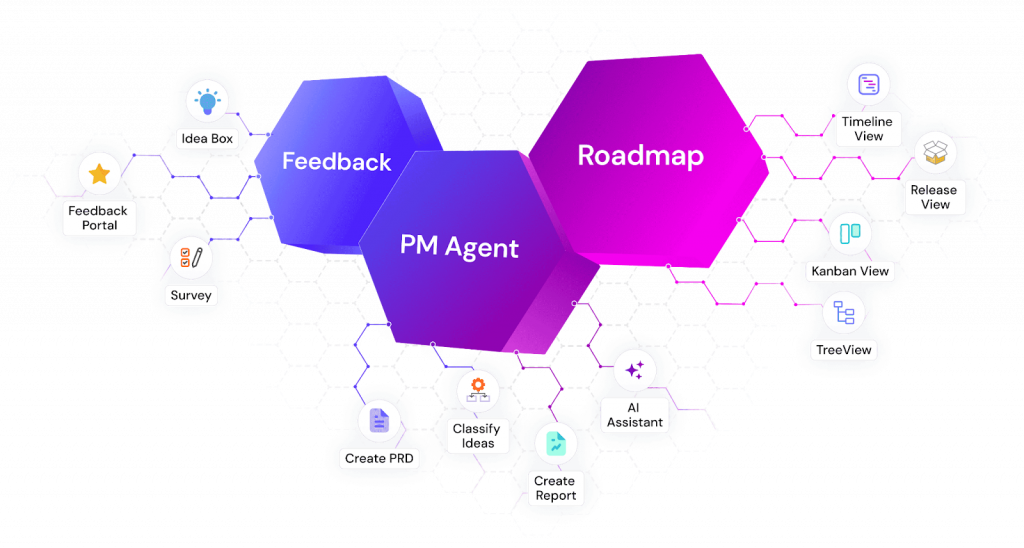
Chisel brings roadmaps, customer feedback, and prioritization into a single, AI-powered workspace, eliminating the need to toggle between half a dozen apps. It leverages your existing product data and custom templates to auto-draft PRDs, specs, and status reports in seconds, freeing you from the daily document grind.
Why Chisel tops our list:
it’s all-in-one, built “by PMs, for PMs,” combining robust AI smarts with deep PM workflow support. So, you get both automated insights and the flexibility to customize every field to your team’s unique needs.
Notable Features
- AI-Driven Docs: Instantly generate PRDs and specs and release summaries using AI trained on your data.
- Feedback Synthesis: Classify, tag, and prioritize thousands of customer comments automatically to spot trends faster
- Team Radar: Visualize stakeholder alignment in real-time, ensuring decisions reflect the whole team, not just the loudest voices
- 360° Integrations: Out-of-the-box connectors with Jira, Slack, GitHub, and more keep every team on the same page.
Some Limitations We Noticed
- Learning Curve: The depth of customization can be overwhelming at first.
2. ChatGPT – Best LLM for Product Managers
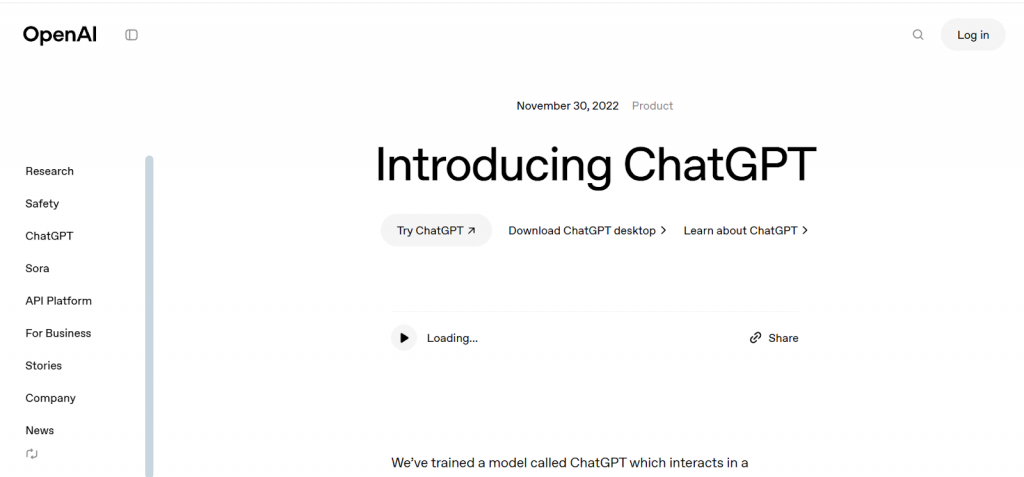
ChatGPT offers a conversational AI “co-pilot” that can brainstorm features, outline user stories, analyze market data, and even simulate customer interviews, all through simple prompts. It’s trained to follow instructions, admit mistakes, and handle multi-turn dialogue, making it uniquely suited for iterative PM tasks.
We love ChatGPT over other LLMs:
its combination of broad knowledge, plug-and-play plugins, and custom GPT capabilities lets you tailor the model to your product’s domain without training a separate instance.
Notable Features
- Custom GPTs: Build role-specific assistants (e.g., a “Feature Validation GPT”) that pull from your internal docs or user research
- Plugin Ecosystem: Connect to Jira, Notion, or Tableau to fetch live data directly into your chats.
- Multimodal Inputs (Enterprise): Upload wireframes or slides and have ChatGPT critique UX flows or draft spec updates.
Some Limitations We Noticed
- Hallucinations: Occasional fabrications around data or feature capabilities require careful, prompt validation.
- Context Window: Complex roadmaps can exceed the token limit, forcing you to chunk inputs manually.
- Cost: Advanced models (GPT-4) and enterprise features can get pricey at scale.
Next up is the visual whiteboard that keeps every team in sync, from design to engineering.
3. Miro – Best for Cross-Team Collaboration
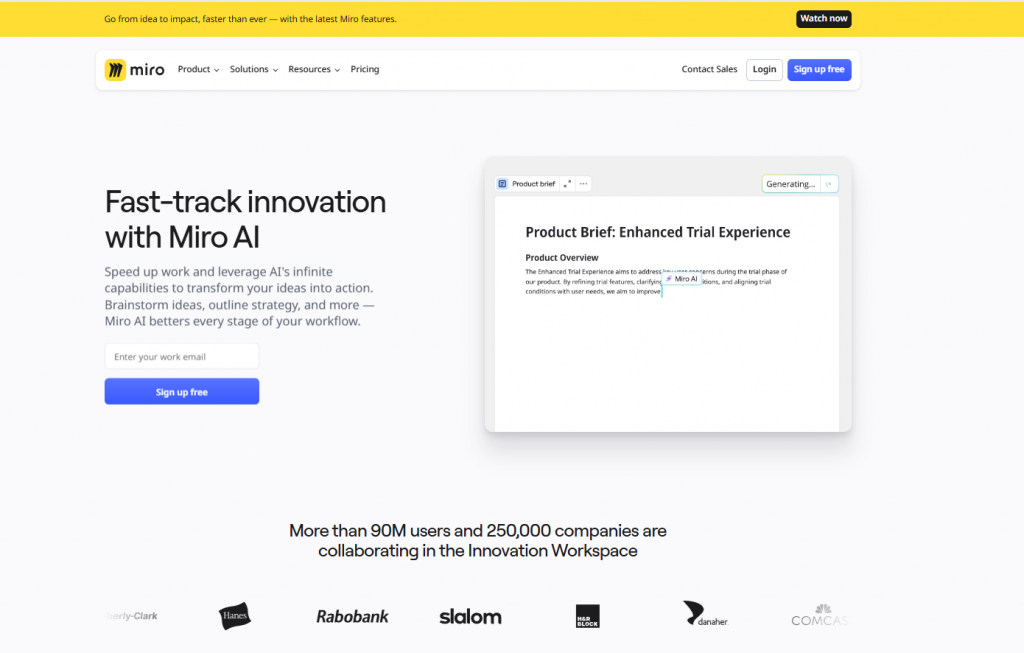
Miro’s infinite canvas excels at collaborative planning, from user-story mapping to sprint retrospectives. With built-in AI tools (Miro AI) that synthesize board content into summaries, brainstorm directions, or even create basic wireframes, you can move from raw ideas to polished roadmaps without leaving the canvas.
Why Miro stands out:
Many companies leverage its real-time and asynchronous collaboration features, making it the de facto virtual war room for modern PM teams.
Notable Features
- Miro AI: Summarize sticky-note clusters, auto-generate mind maps, and draft user-story outlines from board content.
- Template Library: Many community and official templates for roadmaps, impact-effort matrices, and more.
- Integrations Galore: Two-way sync with Jira, Azure DevOps, and Confluence keeps dev and PM tooling aligned.
Some Limitations We Noticed
- AI Credit Limits: The free tier only includes a few credits per month per user, which can throttle heavy use.
- Learning Onboarding: New users often need a quick “Miro 101” to avoid feature overload.
For agile market research and fast feedback loops, here’s the survey platform we swear by.
4. QuestionPro – Best AI Survey Tool for Agile Market Research

QuestionPro merges enterprise-grade survey logic with generative AI (QxBot) to let you build, distribute, and analyze surveys in seconds. Its AI assistant generates question drafts, suggests logic branches, and identifies key sentiment trends, so you spend less time fiddling with survey builders and more time interpreting insights.
Why QuestionPro fits agile PM:
Rapid “deploy-and-decide” cycles are critical for hypothesis testing, and QuestionPro’s AI-powered Research Edition slashes survey design time by a factor of ten.
Notable Features
- QxBot: Conversational survey builder that writes question logic based on your prompt.
- Advanced Analytics: MaxDiff, conjoint analysis, and sentiment tagging all in one dashboard.
- Global Compliance: GDPR, HIPAA, ISO-27001 certified—ideal for regulated industries.
Some Limitations We Noticed
- AI Only in Research Edition: Generative features require the higher-tier plan, which may be overkill for simple NPS surveys.
- UI Complexity: The breadth of features can be daunting, and new users often need training.
- Response Panel Costs: If you need a built-in panel, costs can escalate quickly for niche audiences.
Now, let’s add some high-fidelity visuals to your product narratives.
5. Leonardo.AI – Best AI Image Generator
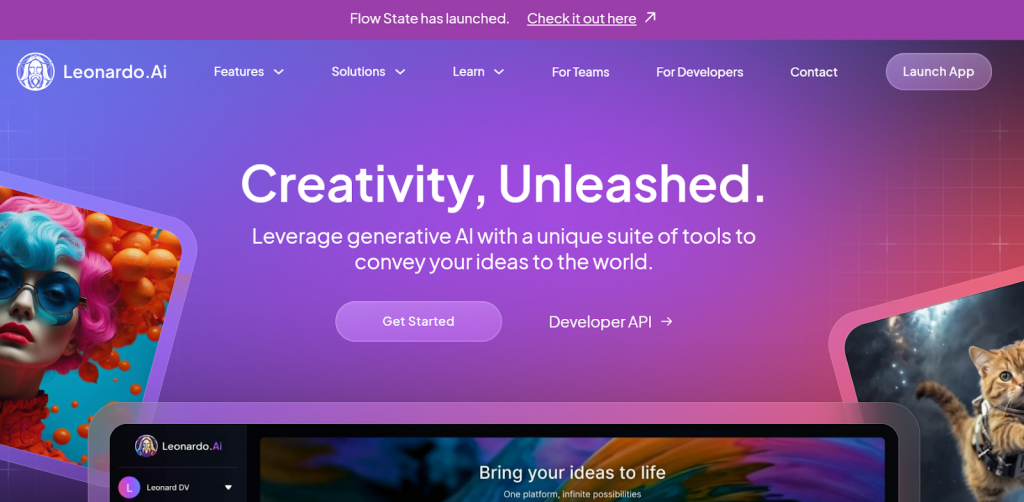
Leonardo.AI delivers production-quality visuals with photorealistic pipelines (e.g., Photoreal V2) and advanced editing (inpainting, upscaling, background removal) in seconds. Its Phoenix foundational model ensures style consistency across batches, perfect for pitch decks, mockups, or marketing assets.
Why Leonardo.AI wins:
with 1 billion+ images generated and a deep feature set, including an API for automated asset pipelines, it’s built to scale from solo PMs to enterprise creative teams.
Notable Features
- Style Presets: Lock in brand aesthetics and apply them across all outputs automatically.
- Collaborative Workspaces: “Leonardo for Teams” offers role-based permissions and IP protection for shared libraries.
- Unlimited Variations: Generate rapid A/B concepts to refine UI elements or illustrate new feature flows.
Some Limitations We Noticed
- Free-Tier Limits: 150 tokens/day can bottleneck heavy testing phases.
- Prompt Sensitivity: Achieving exact compositions often requires multiple prompt tweaks.
- Compute Costs: High-resolution and animation features can incur premium credit usage.
6. UserTesting – Best for Feature Validation & “Why” Behind Customer Behavior
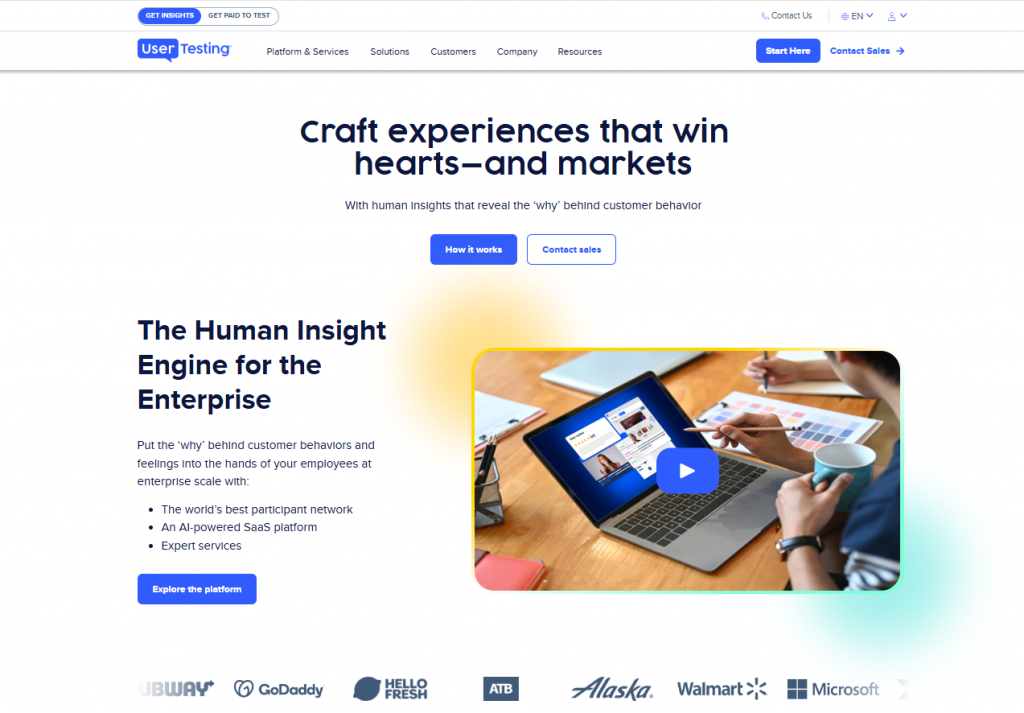
Alright, with user-centric validation. UserTesting is the go-to platform for capturing real user interactions with your product, whether it’s a prototype, a live feature, or a design mockup. You recruit vetted participants, run moderated or unmoderated tests, and get video-backed feedback on what users actually do and why they do it.
Why UserTesting wins:
Surface-level metrics won’t cut it to ensure your features solve user problems. UserTesting goes deeper: you see users’ screens and hear their thought processes live. That “aha” into the why behind every click helps you prioritize enhancements and iterate UserTesting confidently.
Notable Features
- Video & Audio Capture: Watch exactly how users navigate flows and listen to their candid commentary
- Insights Hub: Centralize all findings—tags, clips, sentiment—for cross-team sharing and alignment.
- Prototype & Live Testing: Switch seamlessly between Figma/Sketch prototypes and production builds for end-to-end validation.
- Benchmarking with QXscore: Compare new features against competitors and track usability improvements over time.
Some Limitations We Noticed
- Cost for Heavy Usage: Premium plans can get pricey if you run tests frequently.
- Recruitment Lag: While median match time is fast, niche audiences can take days to source.
- Learning Curve: New users often need a walkthrough to master tagging, clip editing, and report generation.
7. WriteMyPRD – Best for Online PRD Generation
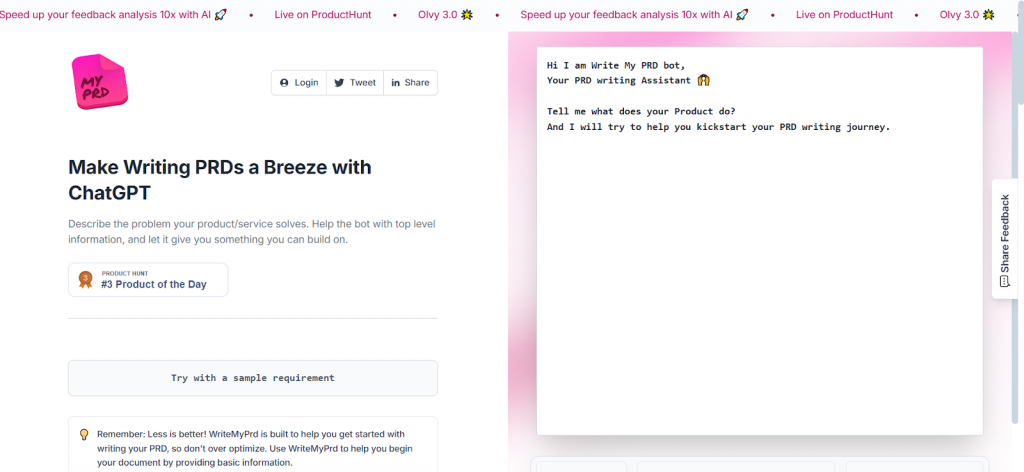
Moving right along, WriteMyPRD uses ChatGPT under the hood to transform a few bullet points into polished Product Requirement Documents. Plug in your feature outline, target audience, goals, and voilà, and you get a first draft PRD ready for review in seconds.
Why WriteMyPRD:
WinsPRDs can eat up hours of your week. WriteMyPRD accelerates spec writing by automatically generating objectives, success metrics, user flows, and acceptance criteria, letting you refine instead of starting from a blank page.
Notable Features
- GPT-Powered Drafting: Auto-creates PRD sections, such as overview, goals, and user stories, based on minimal prompts.
- Template Library: Choose from industry-standard PRD templates or import your own for maximum consistency.
- Collaborative Editor: Comment, version, and export to Google Docs or Notion with one click
Some Limitations We Noticed
- Generic Tone: Outputs can feel boilerplate until you tweak prompts or templates.
- Context Window: Very long feature outlines may exceed input limits, requiring you to chunk descriptions.
- Feature Depth: Complex flows with multiple edge cases sometimes need manual refinement.
8. Ideamap.ai – Best for Generating Ideas & Concepts with AI
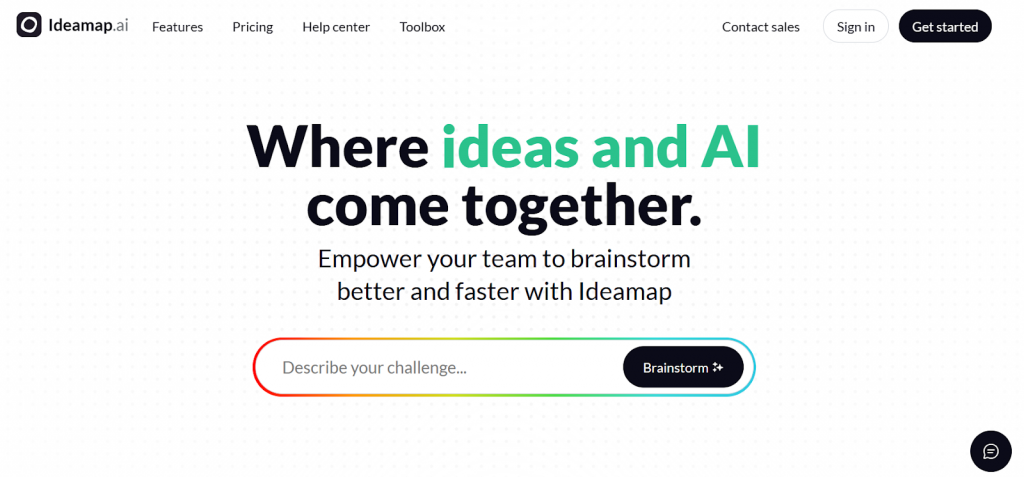
Ideamap.ai’s infinite visual canvas becomes your jam session buddy when your team hits an ideation wall. It’s a real-time, AI-assisted whiteboard that generates related concepts, clusters themes and surfaces fresh angles as you and your team brainstorm.
Why Ideamap.ai is great:
Plain sticky notes only go so far, Ideamap’s AI Actions (e.g., SCAMPER, reverse thinking) automate the heavy lifting, delivering dozens of spin-off ideas in moments. This turbocharges workshops and powers continuous innovation.
Notable Features
- AI-Driven Brainstorming: Instant idea suggestions and topic detection to keep sessions flowing.
- Facilitator Toolbox: Built-in frameworks (SCAMPER, analogies, agendas) for structured ideation.
- OpenAI & Stability AI: Uses GPT-4 for text and Stability AI for visuals, giving you concept sketches alongside brainstormed bullets.
- Real-Time Collaboration: Multiple users can riff together, merge maps, and vote on top ideas live.
Some Limitations We Noticed
- Template Limitations: Out-of-the-box templates may not cover every niche method.
- Heavy JS Dependence: Requires a modern browser with JavaScript enabled, no offline mode.
- Learning Curve: New users may need a quick tour to find AI Actions and customize their workflows.
9. User Interviews – Best for User Research & Recruiting Platform
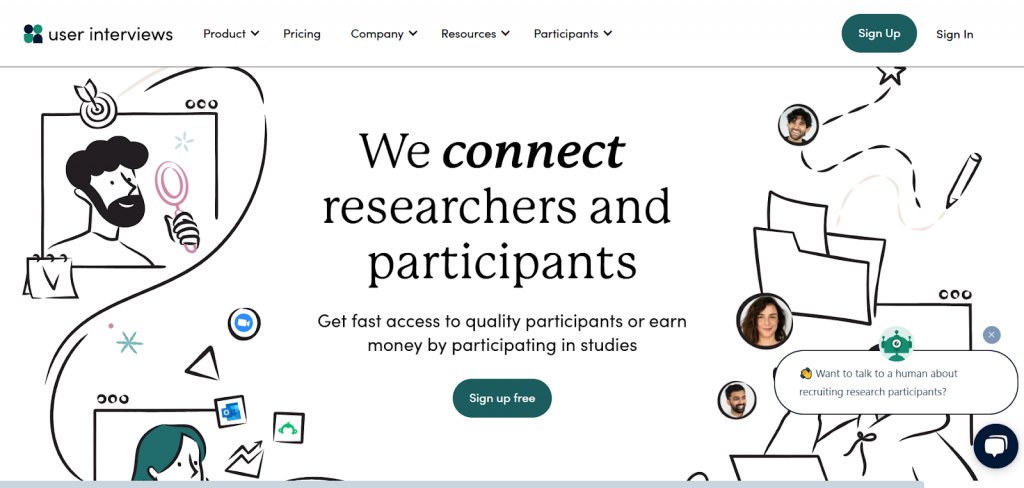
Now for recruiting and running studies: User Interviews connects you with a vetted panel of 5 million+ participants, automates screening, scheduling, and incentives, and delivers quality qualitative insights, everything from 1-on-1 interviews to diary studies.
Why is User Interviews great?
Speed is everything in Agile PM. With a 1 hour median time to first match and turnkey ops support, you get the right voices in your studies without building a panel from scratch, so you can validate hypotheses at lightning speed.
Notable Features
- Ops-Guided Recruiting: An operations specialist helps you refine screener criteria and ensures participant quality.
- All-in-One Hub: Manage invites, screeners, scheduling, incentives, and incentives in one tool, no tool-hopping.
- Enterprise-Grade Compliance: SOC 2, SSO, 2FA, GDPR, critical for regulated product domains.
Some Limitations We Noticed
- Panel Costs: For niche B2B segments, participant fees can add up quickly.
- Self-Serve Threshold: Brand and governance controls mean some teams need training before unlocking full self-serve.
- Feature Depth: Some advanced research methods (e.g., conjoint analysis) require external tools.
10. tl;dv.io – Best AI Note Taker for Meetings
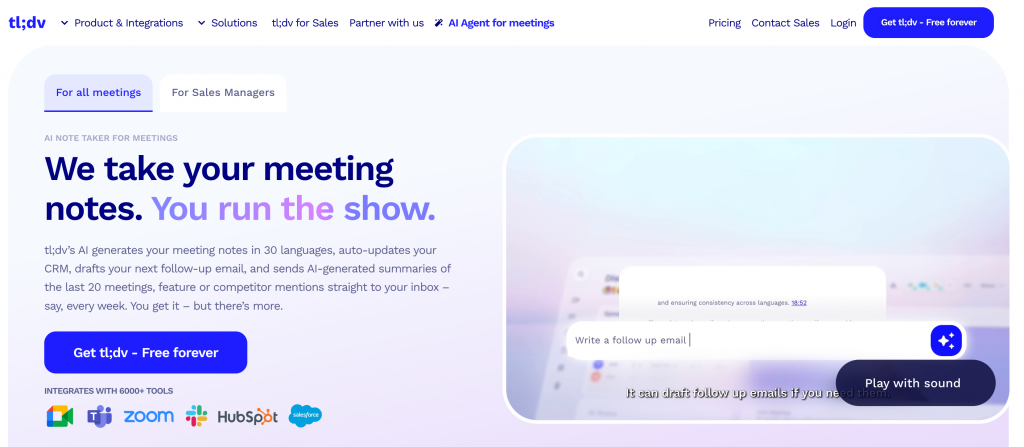
In a world of back-to-back syncs, tl;dv.io swoops in as your autopilot scribe. It records Zoom, Google Meet, and Teams sessions, transcribes them in 30+ languages, auto-generates topic-clustered summaries, and even drafts follow-up emails. At the same time, you focus on leading the discussion.
Why tl;dv.io Wins:
Nothing derails progress like ambiguous action items. tl;dv not only captures every decision and ask, it timestamps “a-ha” moments so you and your team can revisit key clips instantly, no manual note-taking required.
Notable Features
- Multi-Meeting AI Insights: Weekly digests of feature mentions, competitor calls, and sentiment trends across all recorded sessions
- CRM & Email Drafting: Auto-populate your CRM fields and draft follow-ups based on meeting content
- 6000+ Integrations: From HubSpot to Slack and Zapier, it plugs into existing flows with zero code
- Topic Clustering: AI organizes notes by detecting themes, pain points, next steps, and blockers for rapid skimming.
Some Limitations We Noticed
- Mobile Access: A native mobile app is still working; desktop/web is your best bet.
- Free-Tier Limits: AI credits and recording minutes per month may throttle power users.
- Privacy Trade-Off: You’re sharing raw meeting audio; highly regulated organs should vet compliance.
11. Vizly – Best for Research Data Analysis

Last, when you need to crunch user-study metrics or post-launch analytics, Vizly is your AI data analyst. Upload CSV, Excel files, SPSS datasets, or even PDFs. Chat with your data in plain English for visualizations, statistical summaries, and predictive insights in seconds.
Why Vizly for Research Data Analysis?
Whether you’re dissecting survey results or modeling feature-usage trends, Vizly auto-generates Python or R code and interactive charts, no data science PhD required. It’s like having a BI team on demand.
Notable Features
- Natural-Language Queries: Ask, “Which feature had the highest adoption rate by segment?” and get instant plots.
- Automated EDA & Reporting: One-click exploratory analysis and exportable PDF/Word reports for stakeholder decks.
- Private Code Sandbox: Your data and analysis run in an isolated environment, encrypted in transit and at rest.
- Student & Academic Discounts: 25% off for verified students, perfect for university-run research labs.
Some Limitations We Noticed
- Message Quotas: The free plan caps you at very few queries/month, so heavy analysis requires a paid tier.
- Onboarding Complexity: Non-tech PMs may need a short tutorial to frame effective data questions.
- Enterprise Licensing: On-premises options add deployment overhead for tightly firewalled orgs.
Comparitive Table
| Tool Name | Best For | Standout Features | Pricing |
| Chisel | All-in-one AI PM platform | • AI-driven docs (PRDs, specs, summaries)• Feedback synthesis & trend detection• 360° integrations with Jira, Slack, GitHub | • Free Starter Trial (up to 5 PM Agent chats)• Starter Paid: $7?/maker/mo (billed annually) or $9?/maker/mo (billed monthly)• Enterprise: Contact Sales |
| ChatGPT | Conversational AI co-pilot | • Custom GPTs for domain?specific assistants• Plugin ecosystem (Jira, Notion, Tableau)• Multimodal inputs | • Free• Plus: $20?/mo (billed monthly)• Pro: $200?/month• Team: $25?/user/mo (annual) or $30?/user/month• Enterprise: Contact Sales |
| Miro | Cross?team collaboration & whiteboarding | • Miro AI for board summarization & mind maps• Infinite canvas with templates• Two?way sync with Jira, Azure DevOps | • Free ($0)• Starter: $8?/user/mo (annual) or $10?/user/mo (monthly)• Business: $16?/user/mo (annual) or $20?/user/mo (monthly)• Enterprise: Contact Sales |
| QuestionPro | Agile market research & surveys | • QxBot conversational survey builder• MaxDiff, conjoint, sentiment analytics• GDPR/HIPAA/ISO?27001 compliance | Contact Sales (pricing upon request) |
| Leonardo.AI | AI image generation & editing | • Photorealistic pipelines (Photoreal V2)• Inpainting, upscaling, background removal• Collaborative workspaces & API | • Maestro: $48?/mo (billed yearly)• Scale & Enterprise: Contact Sales |
| UserTesting | Feature validation with video?backed feedback | • Live video/audio capture of users• Centralized insights hub with tagging & clips• Prototype & live testing | Contact Sales (flexible, volume?based) |
| WriteMyPRD | Automated PRD generation | • GPT?powered drafting of objectives, user stories & acceptance criteria• Template library• Collaborative editor | Contact Sales (free tier signup; paid plans upon request) |
| Ideamap.ai | AI?assisted ideation & concept mapping | • AI Actions (SCAMPER, reverse thinking)• Real?time canvas with clustering & voting• OpenAI & Stability AI support | Contact Sales (pricing available on request) |
| User Interviews | Recruiting & managing user research studies | • Ops?guided participant recruiting• End?to?end hub for screeners, scheduling, incentives• SOC?2, SSO, GDPR compliant | • Free to sign up• Pay?as?you?go & Subscriptions: Contact Sales |
| tl;dv.io | AI note?taking & meeting summaries | • Multi?meeting AI insights & digests• Automated CRM/email draft generation• 6,000+ integrations | • Free Forever• Paid Plans: Contact Sales (40% off on annual) |
| Vizly | Research data analysis & visualization | • Natural?language queries over CSV/Excel/SPSS/PDF• Automated EDA & exportable reports• Private code sandbox | • Trial: Free (up to 10 messages/mo)• Basic: $19.99?/mo• Premium: $29.99?/mo |
Conclusion
Kudos to you, we have come to the end of the article. Product management in 2025 is more exciting than ever, thanks to the growing power of AI. These tools are transforming how PMs strategize, collaborate, and deliver value faster.
Whether you’re refining roadmaps or analyzing user data, AI is here to lighten the load. Dive in and discover what’s shaping the future of product leadership.
